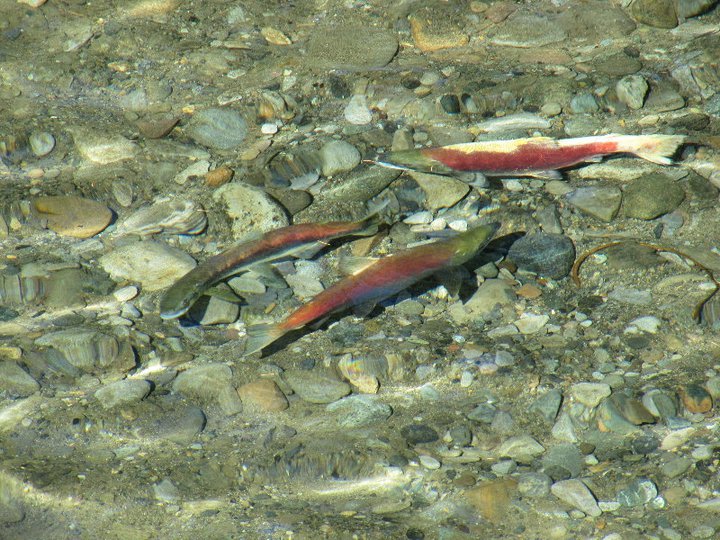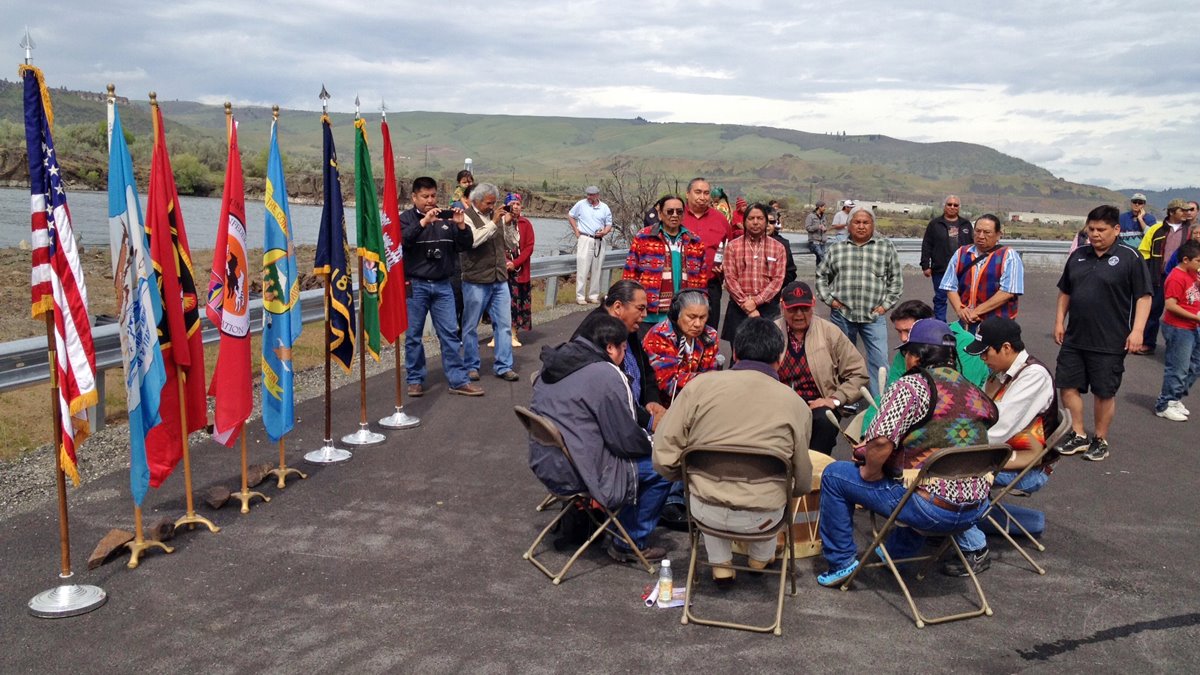Summary of Accomplishments
After more than a decade of implementation of the Spirit of the Salmon, the tribes, the region and the nation have made significant accomplishments. These achievements are summarized below and also discussed in We Have Halted the Salmon’s Decline; The Accords, Pacific Salmon Treaty, and U.S. v. Oregon Agreements; and in the updated Institutional and Technical Recommendations.
- The precipitous decline of some salmon populations was halted so recovery may now be possible and achievable.
- Through hundreds of small and large efforts—from replacing culverts where roads cross streams to reducing the inequitably large ocean catches of upriver chinook to releasing millions of young fish into natural habitats to successfully litigating to require more spill at hydroelectric dams—the tribes and their CRITFC can rightfully take some of the credit for the increased abundance.
- The Spirit of the Salmon Plan became one of the primary recovery plans and frameworks for the basin. It helped to coordinate tribal work and policy priorities. It influenced public thought and perception. It provided guidance for state and federal agencies and policy makers and influenced the content and direction of Endangered Species Act recovery planning.
- Tribal treaty rights to fish on the main stem Columbia River and its tributaries and to habitat conditions conducive to productive and sustainable native fish runs were respected and honored more than ever before.
- Columbia Basin Fish Accords, signed in 2008, represent major policy and legal commitments to implement $600 million of remedial hydrosystem actions and on-the-ground restoration projects. Although the Nez Perce Tribe was not a signatory to the agreement, it too has an aggressive portfolio of projects aimed at rebuilding fish runs consistent with those of the other tribes and CRITFC.
- Although the hydrosystem and its operations still cause significant fish mortality, improvements have been carefully made. Spilling water and screen bypass systems to pass juvenile salmon by deadly dam turbines are now required at most hydroelectric projects on the Columbia and Snake rivers. Structural changes for both migrating adult and juvenile fish appear to be saving salmon and lamprey from previous levels of death and injury.
- Tribal habitat projects have recovered hundreds of stream miles to support salmon. This work is increasingly focused on projects—such as reconnecting floodplains, restoring streamflow and reestablishing habitat complexity—projects that are most likely to contribute to salmon abundance, diversity and species resilience over time.
- Oregon industry, municipalities and the U.S. Environmental Protection Agency worked closely with tribes to revise Clean Water Act standards for toxic chemicals so that the amount of fish people eat (tribal people have some of the highest documented fish consumption rates) is accurately reflected in the regulations restricting allowed discharges of toxic chemicals.
- Scientific research capacity has expanded. Individual tribal programs and activities address the full range of freshwater life stages. A genetics research laboratory is fully operational, providing services and advice to improve tribal programs, including the study of supplementation and its effects on naturally producing populations. CRITFC operates the full-service regional StreamNet Library, which specializes in scientific and technical collections on Northwest fish and wildlife.
- Use of supplementation, to support both naturally spawning fish runs and tribal harvest, has had notable success in subbasins throughout the interior Columbia, including the Klickitat, Yakima, Wenatchee, Methow, Okanagan, Umatilla, Walla Walla, Snake, Clearwater, Salmon, Grande Ronde and Imnaha.
- Tribal hatchery reintroduction projects are successfully reestablishing natural populations of previously extirpated stocks of coho and sockeye in the Hood, Umatilla, Walla Walla, Yakima, Wenatchee, Methow, Clearwater and Grande Ronde rivers.
- The 2011 Tribal Pacific Lamprey Restoration Plan is the most comprehensive strategy to date for rebuilding the basin’s lamprey population and marks the start of a concerted effort by the region’s governments and agencies on behalf of this species.
- Litigation and, in more recent years, negotiations have brought about ocean and in-river harvest regulations for Columbia River salmon that are more rational and lawful. The regulations are now based on abundance rather than catch ceilings. They have also supported more equitable harvest sharing between Indian and non-Indian fisheries, as called for in tribal treaties.
- Treaty Indian and non-Indian sport and commercial fisheries were cautiously and gradually reestablished as some of the fish populations turned toward recovery and as carefully implemented hatchery programs were implemented.
- With increases in salmon runs in many years, tribal members harvested more salmon, from a more diverse mix of species, at a variety of times during the year. More tribal members, including younger generations, found employment and income from fishing.
Tribal Fishing and River Culture Improvements
As salmon-dependent people, our religion, culture, and economy rely on the return of the salmon. Although not appearing in the 1995 Plan explicitly as recommendations, the development and revitalization of tribal communities goes hand in hand with fish restoration. We celebrate these important achievements in connecting salmon restoration with the needs of our salmon way of life.
- Tribal members are using their skills, training and expertise in virtually all aspects of anadromous fish restoration and protection.
- The tribes made great strides in recovering their salmon cultures and economies. Some 30 fishing access sites, destroyed when hydroelectric dams were built on the Columbia, have been replaced.
- Tribal members have improved fish handling, safety and marketing, positioning themselves to take advantage of the increased fish runs and better fishing access. Their salmon are commanding higher prices in the marketplace. Once a vital part of tribal livelihood, fishing may regain its rightful place in tribal life.
- Celilo Village, one of the longest continually occupied sites in North America and a symbol of tribal salmon culture, was renovated with a new water supply and distribution system, a new sewer system, paved streets and a refurbished longhouse.
- The Confederated Tribes of the Umatilla Indian Reservation moved its First Foods mission from concept to application. The seminal Umatilla River Vision, a framework for managing riverine ecosystems, is based on traditional knowledge preserved in tribal religious and cultural practices.








